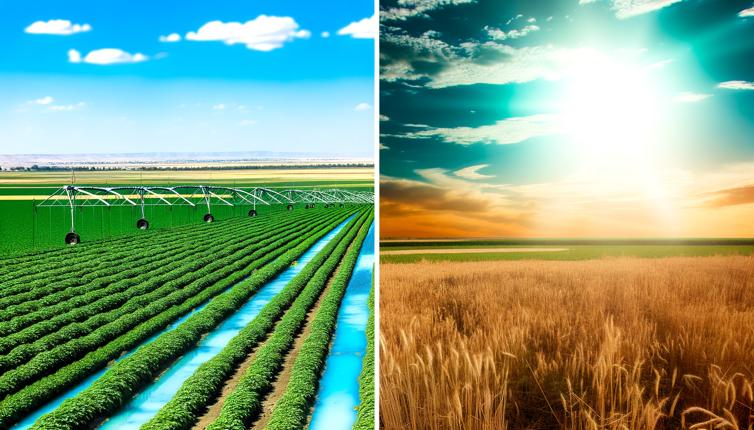Drip Irrigation
Drip irrigation is a method of irrigation that involves applying water directly to the root zone of plants. This is achieved through a network of pipes and emitters that deliver water slowly and consistently.,One of the main advantages of drip irrigation is its high efficiency in water usage. Since water is delivered directly to the plants' root zones, there is minimal water loss through evaporation or runoff. This can result in significant water savings compared to other irrigation methods.,Drip irrigation also allows for precise control over the amount of water delivered to each plant. This enables farmers to tailor irrigation schedules to the specific needs of different crops, resulting in optimal growth and yield.,Furthermore, drip irrigation can reduce weed growth as water is only supplied to the desired plants, minimizing the availability of water for weed germination and growth. Additionally, since the foliage remains dry in drip irrigation, it can help prevent certain plant diseases that thrive in wet conditions.,However, it is worth noting that drip irrigation systems can be expensive to install and maintain. The initial investment in equipment and infrastructure may deter some farmers, particularly those with limited financial resources.,Additionally, drip irrigation requires careful monitoring and management to ensure that the emitters are functioning properly and delivering water evenly. Any blockages or malfunctions in the system can lead to uneven water distribution and potential crop damage.,Overall, drip irrigation is a highly efficient and sustainable method of water management, offering precise control and conservation benefits, albeit with some initial costs and ongoing maintenance requirements.
Furrow Irrigation
Furrow irrigation, also known as flood irrigation, is a traditional method of irrigation that involves creating small channels or furrows between crop rows and flooding them with water.,One advantage of furrow irrigation is its simplicity and low cost. It requires minimal infrastructure and equipment, making it accessible to farmers with limited resources. It is also relatively easy to implement and manage.,However, furrow irrigation is known for its lower efficiency compared to drip irrigation. Since water is applied on the surface, there is significant evaporation and runoff, leading to water loss. This can result in inefficient use of water resources and increased water consumption.,Another drawback of furrow irrigation is that it can promote weed growth. The flooding of furrows provides ample water for weeds to germinate and thrive, necessitating additional weed management efforts.,Despite its limitations, furrow irrigation can still be a viable option in certain situations, particularly for larger fields and crops that can tolerate wet conditions. Its low cost and simplicity make it an attractive choice for farmers with limited financial means.,It's worth mentioning that advancements in irrigation technology, such as improved furrow design and management techniques, can help enhance the efficiency and sustainability of furrow irrigation systems. However, it is important to consider long-term sustainability and water conservation goals when choosing an irrigation method.
Conclusion
In conclusion, the choice between drip irrigation and furrow irrigation depends on various factors such as the size of the field, crop requirements, available resources, and long-term sustainability goals. Drip irrigation offers high efficiency, precise control, and water conservation benefits, but comes with initial costs and maintenance requirements. Furrow irrigation, on the other hand, is a low-cost option with simplicity and accessibility advantages, but lower efficiency and potential water loss. Ultimately, farmers should carefully evaluate these factors and choose the method that best suits their specific needs and circumstances.









